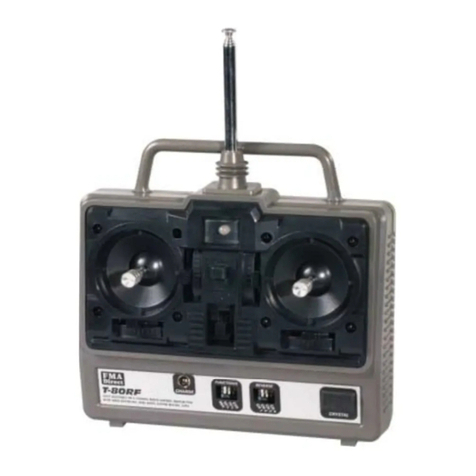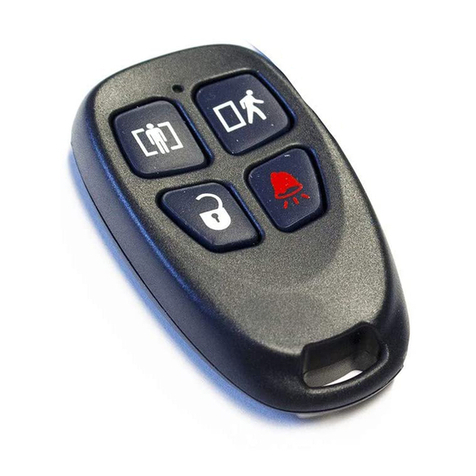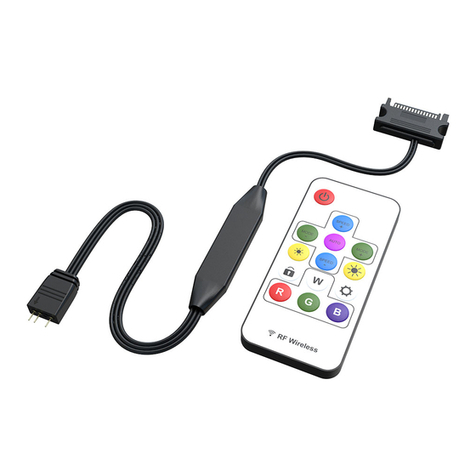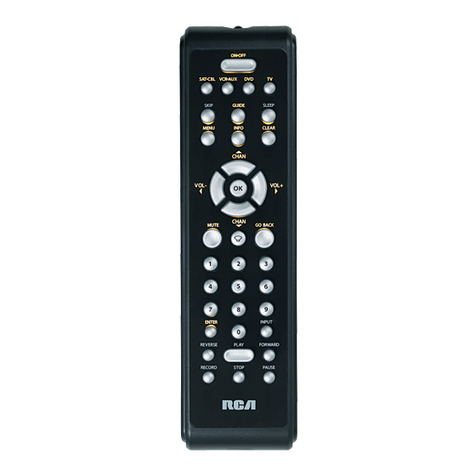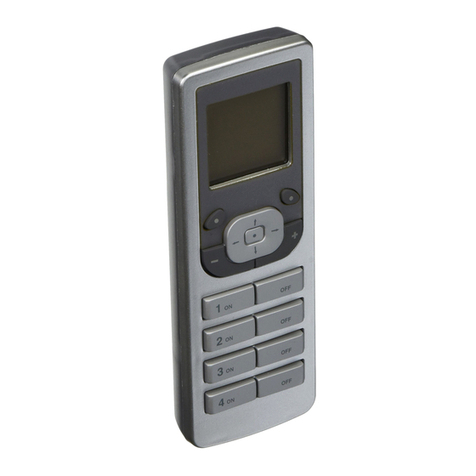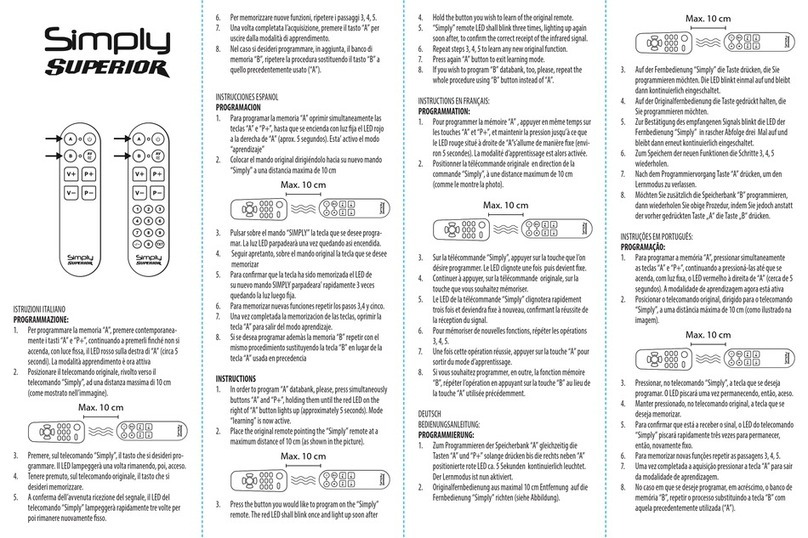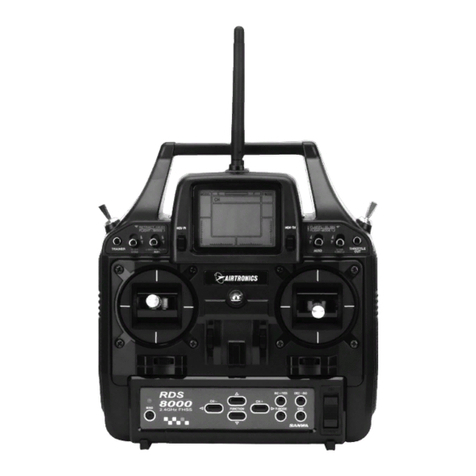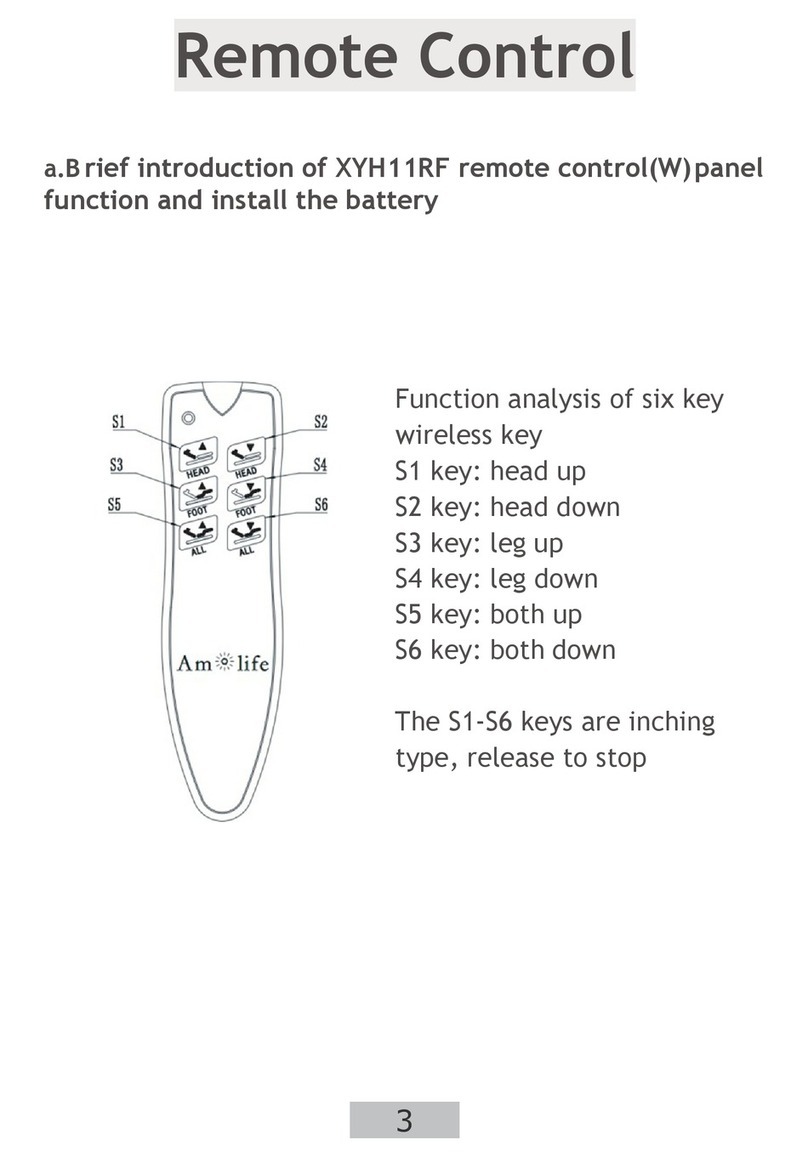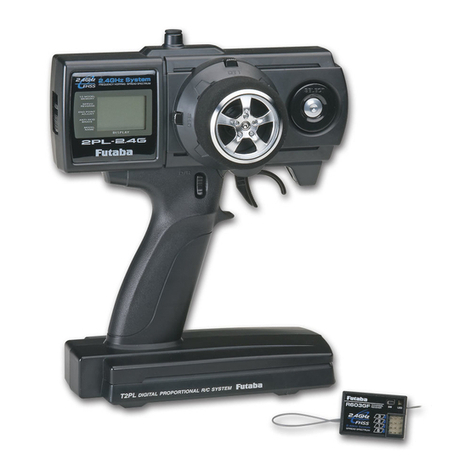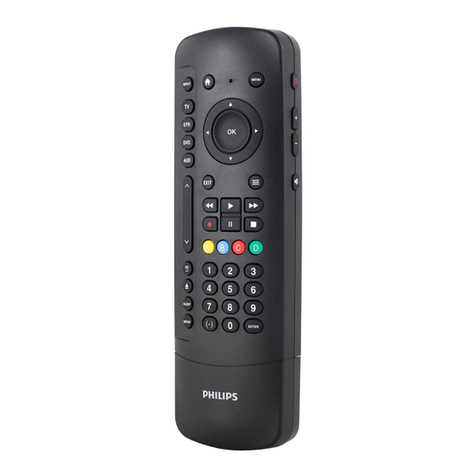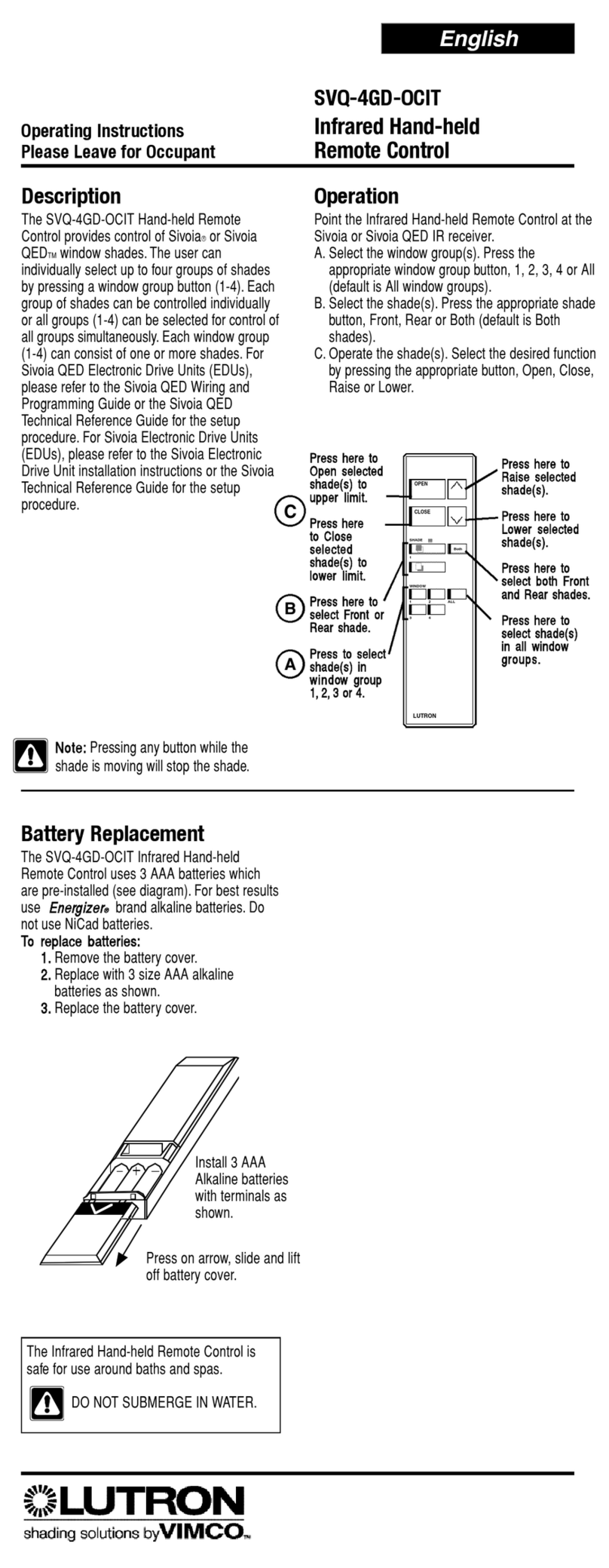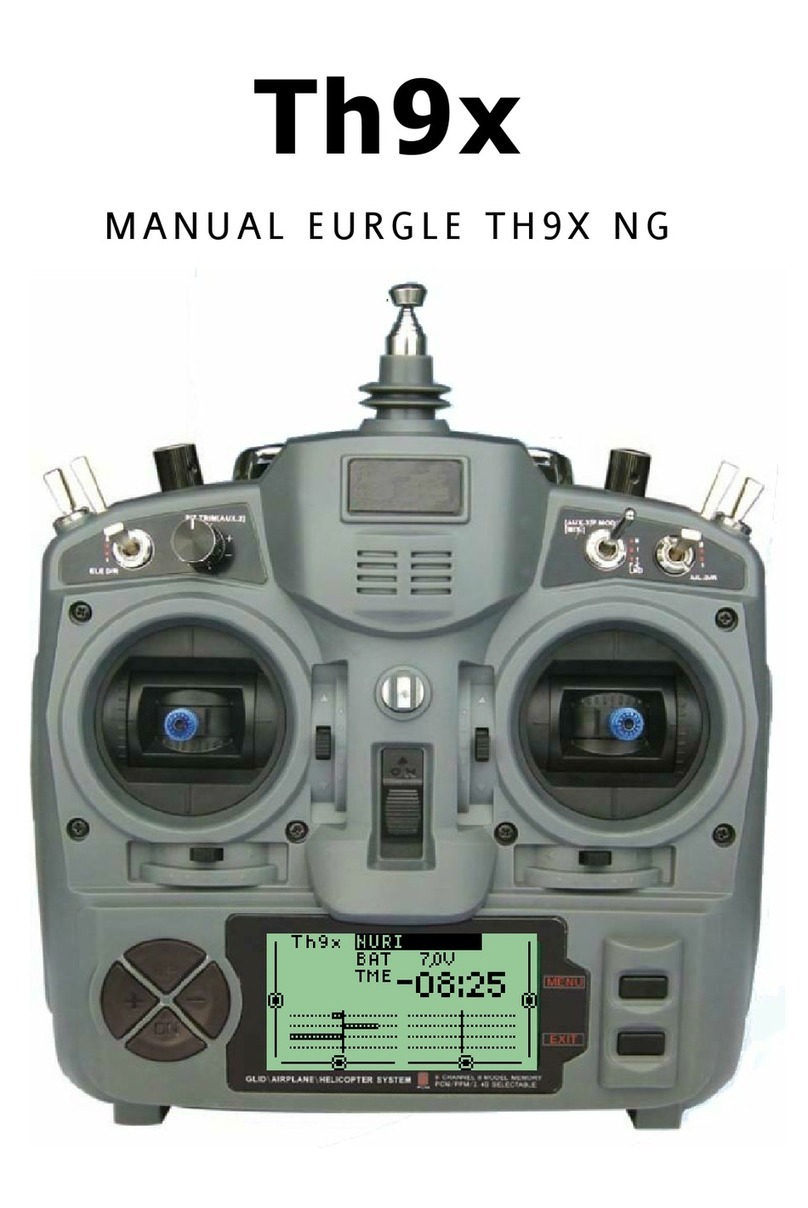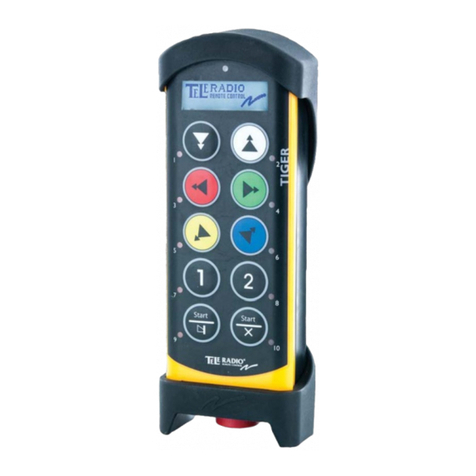FMA Direct G100 User manual

•USING REMOTE GAIN: Remote gain is an extremely useful feature of the G100. When
using the remote gain input to the G100, the gyro's gain can be controlled from the transmitter
via an auxiliary channel on the receiver. Unlike most gyros on the market, the G100 remote
gain is fully proportional.
Setting Up For Remote Gain: To set the system up for remote gain, perform the following:
a) Position the POT/RMT program dip switch to the RMT setting to defeat the gain
control trim pot and enable the AUX input on the gyro.
b) Plug the AUX lead into a proportional auxiliary channel. A switch channel such as
landing gear can be used as long as the end-points are adjustable in the transmitter.
Note: the simplest way to use the G100 with remote gain is to utilize an auxiliary
channel that has variable gain. This way, gain can easily be controlled during flight by
moving the transmitter knob. If the transmitter being used does not have a variable
auxiliary channel, gyro operation can still be set up for remote gain operation using a
switched type auxiliary channel such as landing gear. This setup will provide for two
gain settings; the end-point adjustments in the transmitter can be used to set high and
low gain values.
c) With the radio system ON, move the model about the control axis while moving the
gain channel knob or switch on the transmitter. You should notice the sensitivity of the
gyro change as the auxiliary channel control is moved.
With a computer, programmable transmitter, the versatility of the G100 can be realized
to an even greater extent. For instance, the gain channel can be mixed with the flight mode
switch so that two gain options are available, one setup for hover, and a different setup for
forward flight. This setup is ideal because the gain required for hover will usually be greater
than the gain required for forward flight as the forward motion of the helicopter tends to
restrict tail rotation.
FLYING:
•PRECAUTIONS:
1. It is extremely important that the model be at ambient temperature before the system
is powered up for flight. Never take the aircraft out of a warm car on a cold day and
power up the system right away. You must allow the model to sit for 10 to 15 minutes
on the ground. In order to perform properly, the gyro must be at the same temperature
as the air.
2. After powering up the system, the aircraft must remain absolutely still for 5 seconds. If
these precaution are not taken, trim changes could occur throughout the flight.
•FIRST FLIGHT: The gain should be set to 25% on the initial flight. Hover the helicopter for a
short moment, then increase the gain. Repeat this procedure until a smooth hover is
achieved. If the gain is turned up too high, the helicopter may start to oscillate back and forth
rapidly. This condition is termed "hunting".
Good luck and enjoy the high performance operation of your new G100!
IN CASE OF PROBLEMS:
1. The G100 gyro is designed and manufactured by Arcamax, Inc.
2. You may call Arcamax ((618) 453-4428) with technical questions or for issues of
repair.
OWNER'S MANUAL
NOTE: PLEASE READ MANUAL
COMPLETELY BEFORE OPERATION
INTRODUCTION:
CONGRATULATIONS!!! Your decision to purchase the FMA Direct G100 piezo gyro assures
you of the highest standards of design available to the R/C industry at an affordable price. The
G100, designed by Arcamax, Inc., and distributed exclusively by FMA Direct, is designed for use in
high performance helicopters and aircraft. Due to its solid state piezo sensor, unique temperature
compensation circuitry, and precision switching voltage regulator, it offers performance unsurpassed
by gyros from other manufacturers. The G100 operates as a standard "rate" gyro, or, if used in
conjunction with a programmable transmitter, proper mixing setups will allow the G100 to be
configured as a "stick priority" gyro.
Although intended primarily for helicopter use, the small size, low weight, low current
consumption and high sensitivity make the G100 ideal for scale aircraft, ducted fan models, and
experimental aircraft such as VTOL.
Piezo gyros are a significant technological advance over the old motor gyros. The absence of
moving parts greatly decreases current consumption, extending both run time and the life of the
gyro. Furthermore, their low mass increases responsiveness. It is important to understand that a
piezo crystal is fragile. Special precautions should be taken when installing and using your
new gyro. Please read the manual completely before attempting to install and fly your new G100.
SPECIFICATIONS:
SIZE: 1.53" X 1.45" X .81"
WEIGHT: 1.0 OZ.
OPERATING VOLTAGE: +4.0V TO +6.5V
CURRENT DRAW: 20 mA (max)
OPERATING TEMP: 23°F - 155°F (-5°C - 70°C)
SERVO PULSE WIDTH: .75 - 2.25 mS
SENSITIVITY: 1/10°per second
FMA, Inc.
5716A Industry Lane
Frederick, MD 21704
Sales: (800) 343-2934 -Technical: (301) 831-8980

PACKAGE CONTENTS:
1. FMA Direct G100 Piezo Gyro. (See TABLE 1 below for system compatibility)
2. Owner's Manual.
TABLE 1 RECEIVER COMPATIBILITY SERVO COMPATIBILITY
G100 Model #: ACE AIR FUT HITEC JR ACE AIR FUT HITEC JR
G100A 9NO! YES NO! NO! NO!
G100F 99YES NO! YES YES YES
G100J 99NO! NO! NO! YES YES
G100FJ 9999YES NO! YES YES YES
PREPARATION:
•INSTALLATION, RECEIVER AND SERVO CONNECTION
1. The G100 is several times more sensitive than standard motor gyros in terms of
responsiveness. To realize this improved sensitivity in your model, FMA Direct
recommends the use of a high quality, ball bearing servo with fast response. A good
candidate is the FMA Direct model S700 servo. In addition, linkages between the
servo and the control surfaces must have absolutely zero slop. Replace any ball links
or horns that show indications of slop or fatigue. Care must be taken when installing
the gyro to isolate the electronics from vibration as much as possible. The G100
should be installed with servo tape that is a minimum of 1/16" thick, 1/8" is preferred.
The gyro mounting surfaces should be extremely rigid - mounting the gyro to a floppy
object will cause reduced sensitivity or could cause failure of the product due to
excess vibration. Never mount the gyro near any sources of heat such as the engine
or the exhaust. An excellent location for mounting the gyro would be under the
canopy next to the radio gear.
2. IMPORTANT: The top of the G100 is labeled "INSTALL THIS SIDE UP!". Care must
be taken to install the gyro in accordance with this label. Failure to do so will prevent
the gyro from operating. The sensitive axis of the gyro runs parallel to the face of the
gyro (the side containing the color portion of the case label). The gyro will detect
rotation on any axis parallel to the sensitive axis. When mounting the gyro in a
helicopter to stabilize the yaw axis, the sensitive axis must be seen as cutting straight
through the main rotor blades of the helicopter.
3. When hooking up the gyro to your servo and to your receiver, use TABLE 1 to check
equipment compatibility. Note that it is possible to interface JR or Hitec servos with
Futaba style channel leads. Be sure that the Brown or Black leads of each of the
connectors are aligned to one another. Model G100FJ will allow for the maximum
possibilities of interfacing the gyro to different equipment types. You may mix and
match Futaba and JR servos, but neither may be used in combination with Airtronics
servos as the voltage polarity is incompatible and a short circuit will be produced
should the two be interfaced.
4. Connect the OUT lead to the servo, the IN lead to the desired channel on the receiver
and, if desired, the AUX lead to an auxiliary channel on the receiver.
•BENCH TESTING THE GYRO
Referring to FIGURE 1, set the program mode dip switches as shown. The POT/RMT switch
should be closer to POT and the REV/NRM
switch should be closer to NRM. Use a
small screw driver to change the settings on
the dip switches if necessary. Bench test
the gyro by turning on the transmitter and the
receiver at this time. After 15 seconds, the
servo connected to the gyro will center. In
normal operation, the model must be
absolutely stationary for 5 seconds every
time the receiver is powered up. If this
procedure is not followed, trim changes will
result from flight to flight. Move the model
about the sensitive axis (or control axis).
The servo should move as the model is
rotated.
If no movement is obtained:
a) re-verify that the gyro is in "trim pot gain" mode (explained in detail later) by adjusting
the dip switches as shown in FIGURE 1.
b) turn the gain control trim pot to maximum sensitivity (fully clockwise).
If still no movement occurs, check wiring and battery voltage. If still no movement occurs,
contact FMA Direct customer service.
If movement occurs, move the model about the other axis. You may notice some movement
in the servo but it should be substantially less than when moved about the sensitive axis.
•SETTING THE DIRECTION
Once you are satisfied that the gyro is operational, the correction direction must be set. With
the radio on, move the model sharply about the control axis. Notice the movement in the
control surface or tail rotor. The direction of the control surface should counteract the
direction of rotation. If it does not, change the setting of the program dip switch marked
REV/NRM. This setting is extremely important as failure to set the direction switch will
result in loss of control of your aircraft. If you are unsure about how to determine this
setting, please talk to someone who can help you.
MODES OF OPERATION:
•TRIM POT GAIN MODE: Trim pot gain is useful if several gyros are on a model or an
auxiliary channel is not available. When using trim pot gain, the gain select dip switch must
be in the POT position. The gyro's gain can now be controlled by adjusting the gain control
trim pot. Turning the pot clockwise causes the gyro to be more sensitive. The AUX input has
no effect when in this mode of operation and may be disconnected.
•REMOTE GAIN MODE: Remote gain mode is used whenever gain control is to be applied
remotely from the transmitter. When using remote gain, the gain select dip switch must be in
the RMT position. The gain control trim pot will be defeated in remote gain mode.
•STICK PRIORITY: Stick priority operation is easily established using a computer radio. A
standard rate gyro at hover keeps the tail from swinging by applying negative feedback. The
problem is when the pilot desires to spin the tail, the gyro senses this and tries to compensate
by applying opposite tail rotor, thus canceling the pilot's command. The result is a slow rate
of rotation about the axis. With a stick priority gyro, the gyro's effect is reduced when the pilot
commands a turn, hence, forcing "stick priority". With a stick priority gyro, a helicopter can be
set up to spin as fast as the pilot wants while still retaining 100% stability at hover. It is
important to note at this time, that stick priority is not recommended for the beginning
helicopter pilot because it makes the aircraft overly sensitive to stick motion.
Setting Up Stick Priority: To set up your transmitter for stick priority, perform the following:
a) Make sure that the G100 is programmed for Remote Gain operation by setting the
POT/RMT dip switch to RMT setting.
b) Set up a mix so that as the stick is moved off center, the gain is reduced.
c) Make the rudder channel the master and the gain channel the slave.
d) Mix +100% for right rudder and -100% for left rudder.
e) Power up the radio and move the model about the control axis and notice the gyro
sensitivity.
f) Continue moving the model about the control axis while at the same time adding
rudder inputs via the transmitter stick. You should notice a reduction in gyro sensitivity
as the stick approaches the limits in either direction.
g) If an opposite condition occurs (an increase in gyro sensitivity at stick limits), reverse
the mixing percentages. That is, mix -100% for right rudder and +100% for left rudder.
h) You may wish to adjust the mix percentages to tailor performance to your specific
requirements. The mixing percentages determine how "fast" the gain is reduced while
the gain control knob or switch on the transmitter determines the total amount of gain.
GAIN
AUX
IN
OUT
RMTNRM
POT
REV
LEADS
MADE IN
U.S.A. BY
ARCAMAX
GAIN CONTROL TRIM POT
PROGRAM MODE DIP SWITCHES
1. POT/REMOTE
2. REVERSE/NORMAL
3 LEADS
FUNCTION
MARKED ON
CASE LABEL
FIGURE 1
This manual suits for next models
4
Other FMA Direct Remote Control manuals
